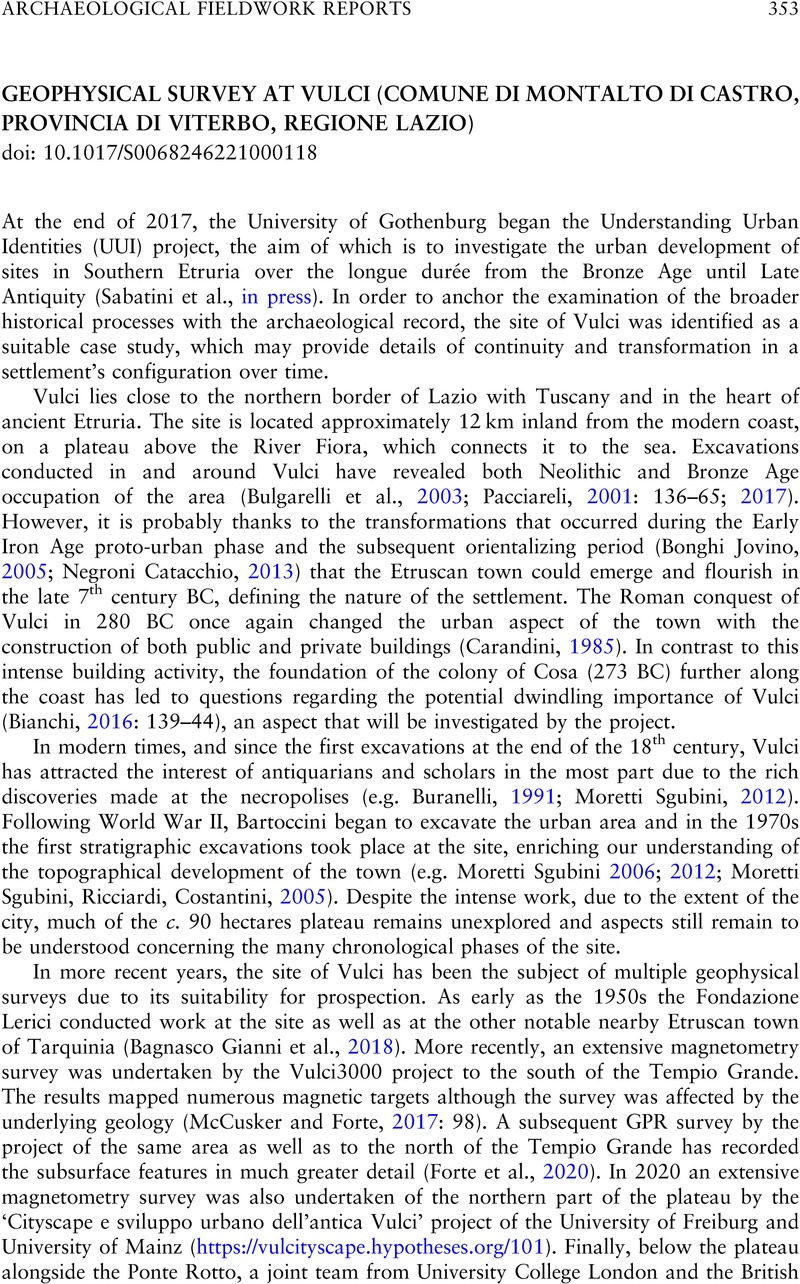Sabatini, S.,
Göransson, K.,
Gustavsson, A.,
Kay, S.,
Pomar, E.,
Selsvold, I.,
Webb, L. in press. History and archaeology at Vulci: old evidence and new data from a geophysical investigation in the urban area.
Bollettino di Archeologia Online.
Google Scholar 